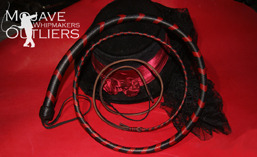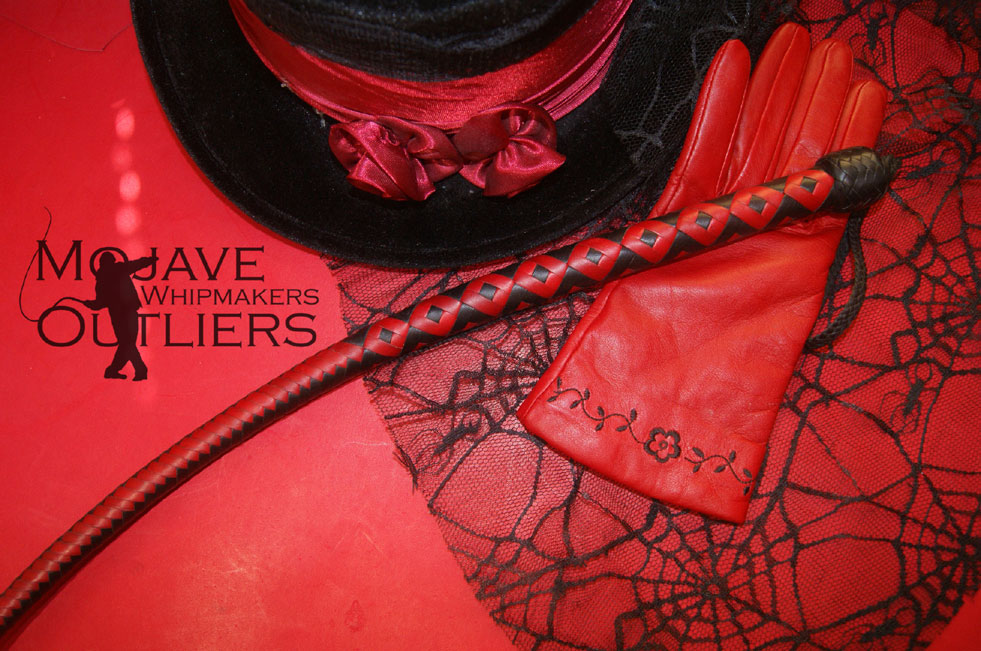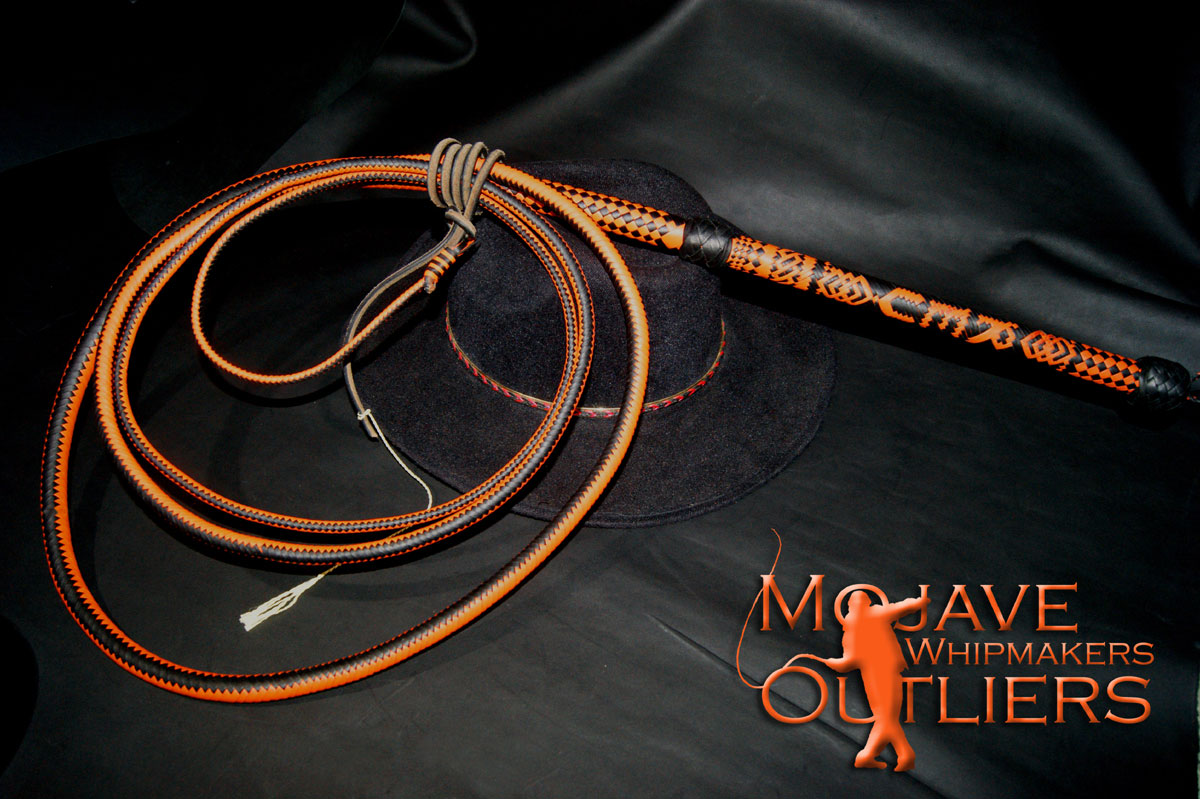Hello, everybody!
This post is for folks to weigh in on how the number of strands in a whip overlay impact the function of the whip, as well as what you might look for in terms of aesthetics when considering a high plait count vs a lower plait count. I get this question a LOT, of course, and I’ll come back later to throw my two cents in. 😉
Have at it!
You see? Each of the above pictured whips have quite different plait counts, yet both are lovely, and BOTH throw just fine. You’ll definitely be able to tell the difference because of length, naturally, but each whip will perform well along all parameters without being significantly improved or handicapped by their plait counts.
Right then, here’s my two cents, which I put here since I can, being the author of this post! The thing to bear in mind is that this is my take, and not my FULL take (that would take too much time, and really you need to BECOME a whip maker to get the full monty, as it were), and too, I am always looking for ways to improve what I do, or new techniques to add to my arsenal of making, so folks can add to what I say here down below.
When a client asks me about high vs low plait count, typically they are coming from a perspective that expects one to always be superior to the other. This is not the case. Not ever. Both have advantages and trade offs, and what you choose will depend on what you want both in terms of functionality and aesthetics, as well as circumstances in which the whip will be used (including how often/how long per use, etc.).
I just want to make this clear: A high plait count does not mean a better whip. A low plait count does not mean a subpar whip.
A good whip is one that pleases you. That’s it!
Now, the nice thing about a high plait count is you have more flexibility in terms of what kind of decorative design you can create. That’s about it as far as clear advantage goes, so I often tell my clients that really, it just depends on what pleases your fancy. My lower plait count whips are just as lovely as my higher plait count whips, just from different aesthetic perspectives.
If you want a high plait count on your overlay, then that means I construct your belly with that in mind. Since the leather is sliced and diced finer with a high plait count, you want to make sure you have enough support so that you don’t get a negative impact from this (and it’s just a minor consideration in terms of what it takes to account for it, because of course the overlay is just the last bit of the whip construction, isn’t it?). Constructing a whip is tricky because as a whip maker you need to think in terms of the whip’s lifetime which is spent in motion, and not just how it will throw when it’s new. Yes, typically a whip with a high plait count will–all things being equal, which they never are–be a bit more supple out of the box compared to a lower plait count whip. However, over time, as the two whips you’re theoretically comparing work in, the difference will diminish, and may become insignificant (assuming the difference was large enough to start with). In addition, a higher plait count whip is at greater risk of getting too limp over time, but that risk is slight in particular if, as mentioned, the belly is built with this in mind. Also, “too limp” may simply mean that it takes a touch more work to throw the whip. It doesn’t mean that suddenly one day your whip collapses on the nearest fainting couch and refuses to budge, right?
Conversely, if you want a lower plait count, I bear that in mind as I’m constructing your WHOLE whip, as well.
Feel free to add your thoughts and comments below!
Cheers!
DM


